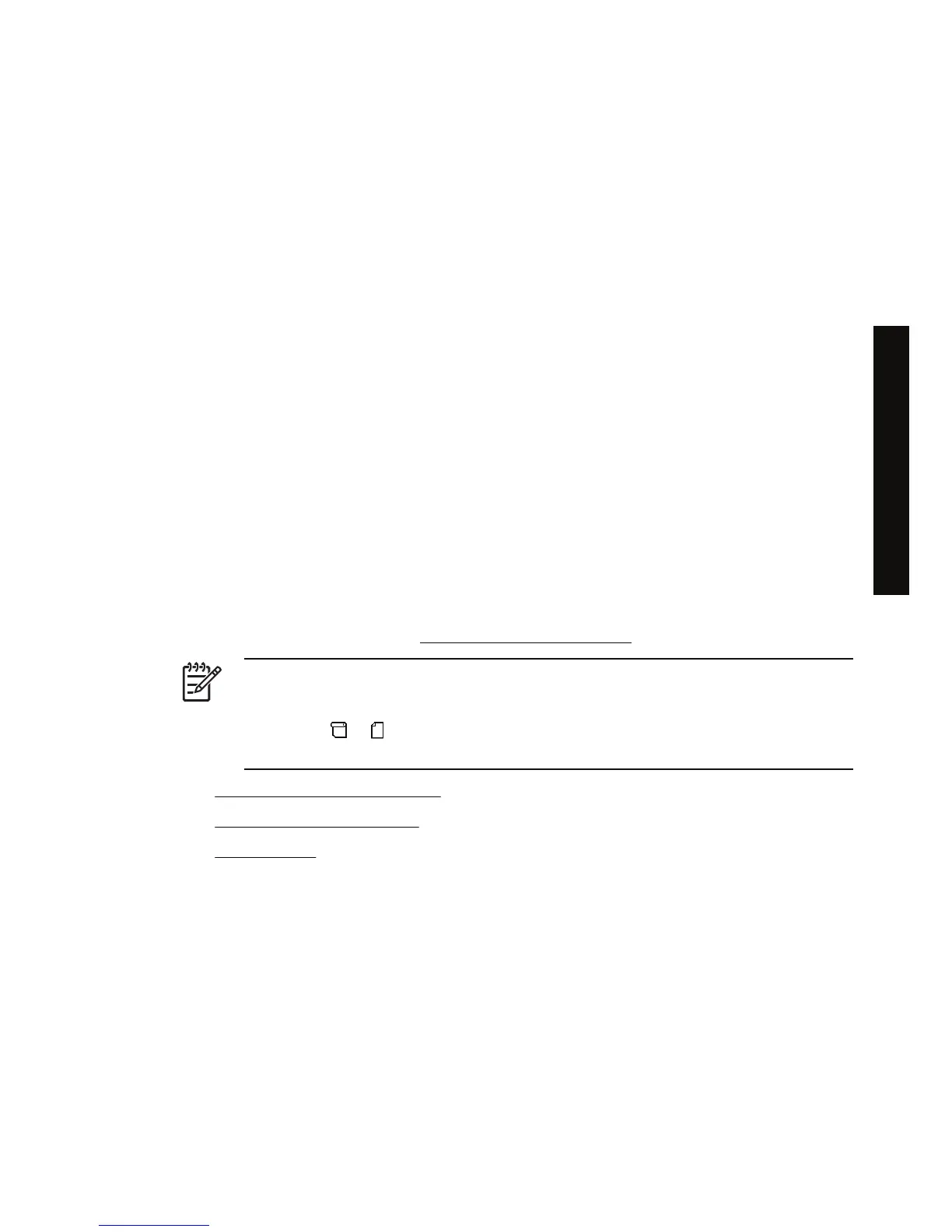10 How do I... (paper advance calibration
topics)
Your printer was calibrated at the factory to ensure that it advances the paper accurately when using
supported paper types in normal environmental conditions. However, you may find it useful to
recalibrate in certain circumstances:
● Unsupported paper: different paper manufacturers provide papers with a wide range of properties
such as paper thickness or stiffness, which may benefit from calibration. You can expect the best
print quality when using HP's recommended papers (see Using your printer on CD).
● Abnormal but stable environmental conditions: if you are printing in unusual conditions of
temperature or humidity (see Using your printer on CD), and those conditions are expected to
remain stable, recalibration may be worthwhile.
However, paper advance calibration assumes that you have an image quality problem and that you
have already followed the appropriate troubleshooting procedure for that problem. If you have no
particular problem, there is no need to perform the calibration.
Before performing paper advance calibration, use the Image Diagnostics Print to check that the
printheads are correctly aligned (see
Print the Image Diagnostics Print).
NOTE In theory, paper advance calibration should improve print quality. However, if you find
the calibration print difficult to interpret, you may choose the wrong paper advance setting and
thus degrade print quality. In this case, you can restore the original factory settings by
selecting the
or icon at the front panel, and then Paper advance calibration > Optim.
for drawings/text or Optimize for images > Select Pattern > Factory Default.
●
Overview of the calibration process
●
The calibration process in detail
●
After calibration
Overview of the calibration process
1. Use the front panel to print a colored pattern stored in the printer seven times, each time with a
different paper advance setting.
2. Decide which pattern has been printed most successfully.
3. Use the front panel to tell the printer which pattern was best—and therefore which paper advance
setting to use in future.
ENWW Overview of the calibration process 99
How do I... (paper advance
calibration topics)

